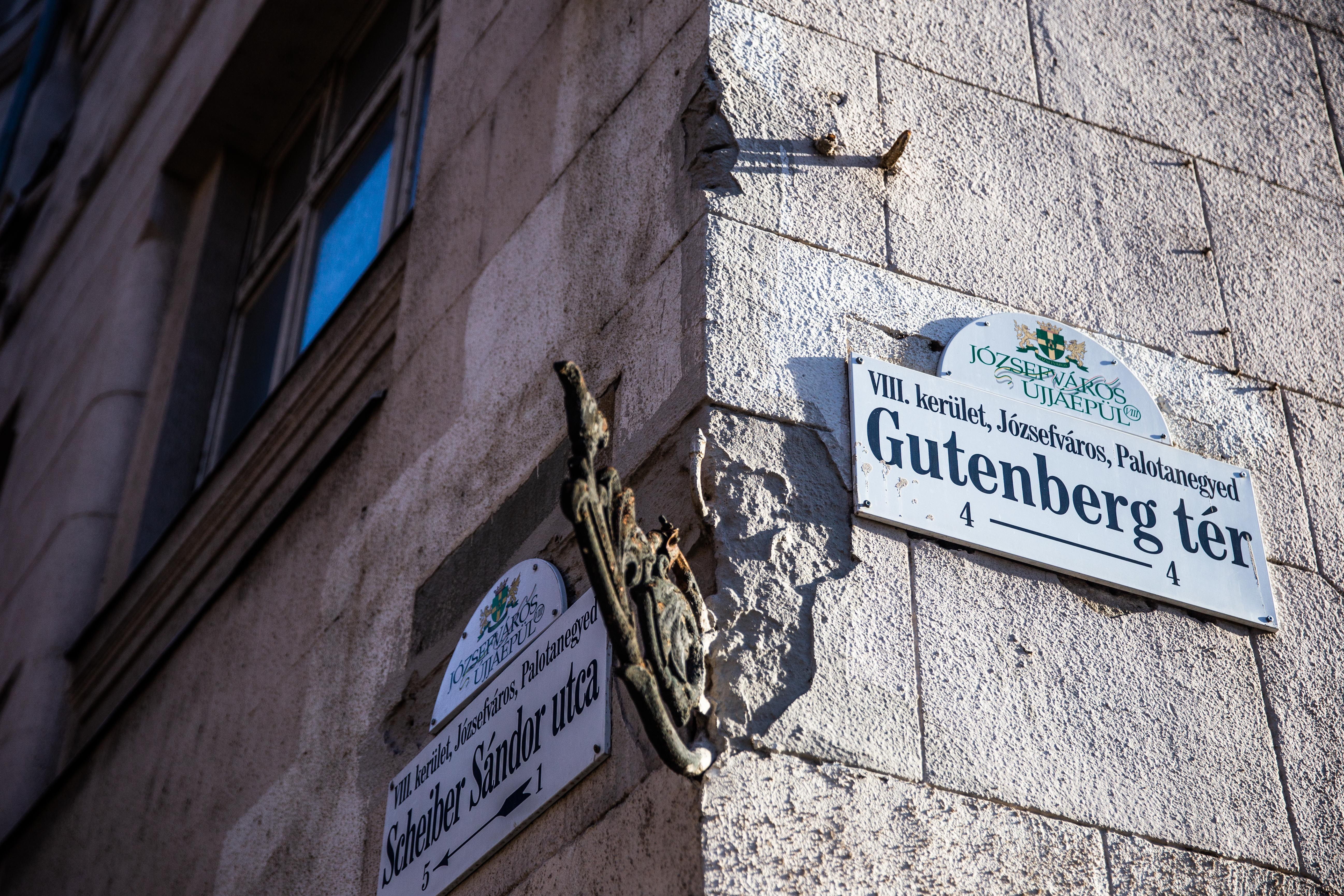Printers vs Doctors
Although Gutenberg tér seems such a small, peaceful area, the tension between doctors and printers raged for decades, fortunately only at the level of name-calling and lobbying. The question to be decided was after whom the square should be named: printers or doctors.
For this reason, the prominent figures of both professions
wanted to steal the name and they also demanded a sculpture
depicting a great figure of each craft. Until 1946, the City persistently resisted the submissions of both printers and doctors,
supporting both in principle and rejecting them in practice. Then finally doctors were at least allowed to erect a statue.
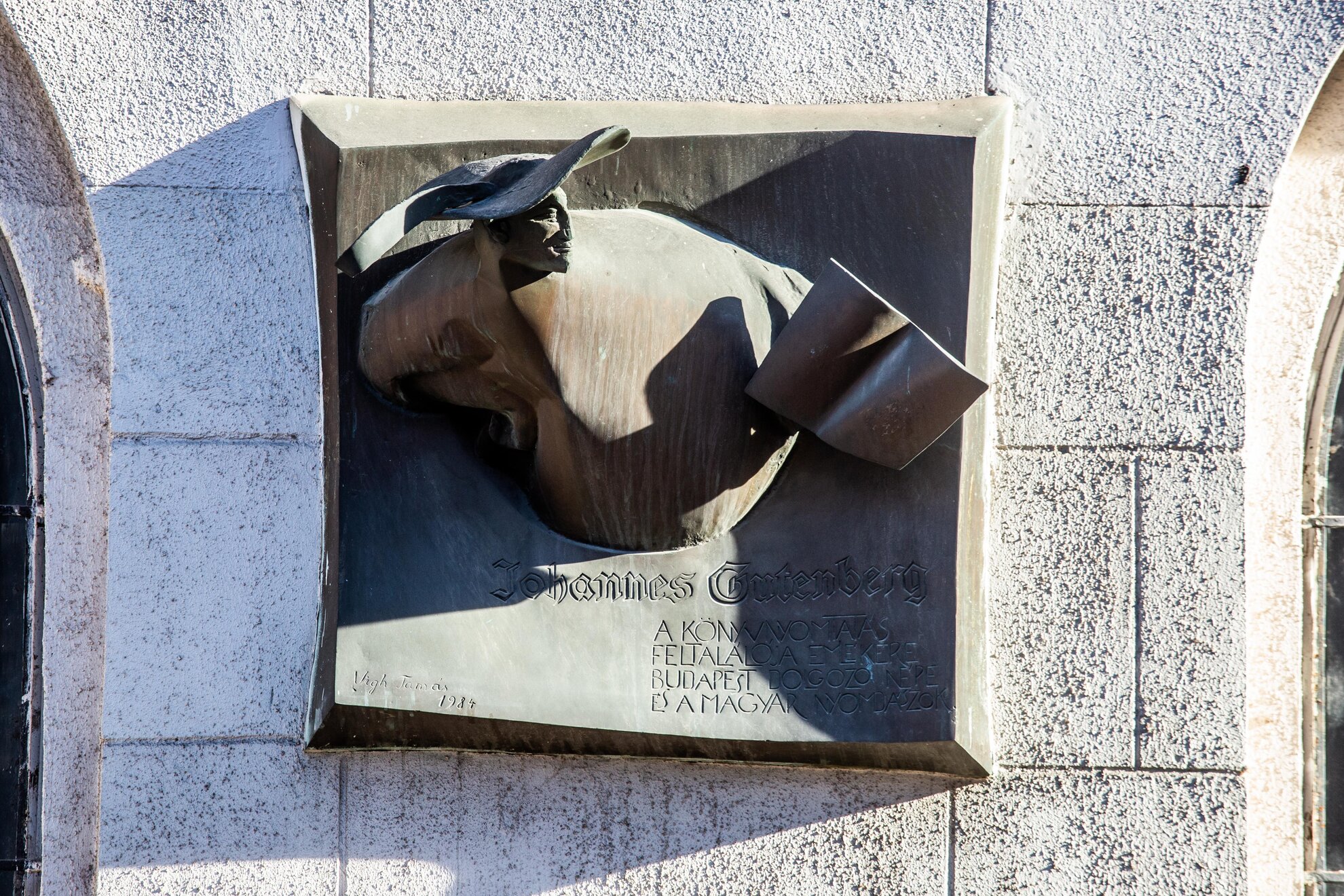
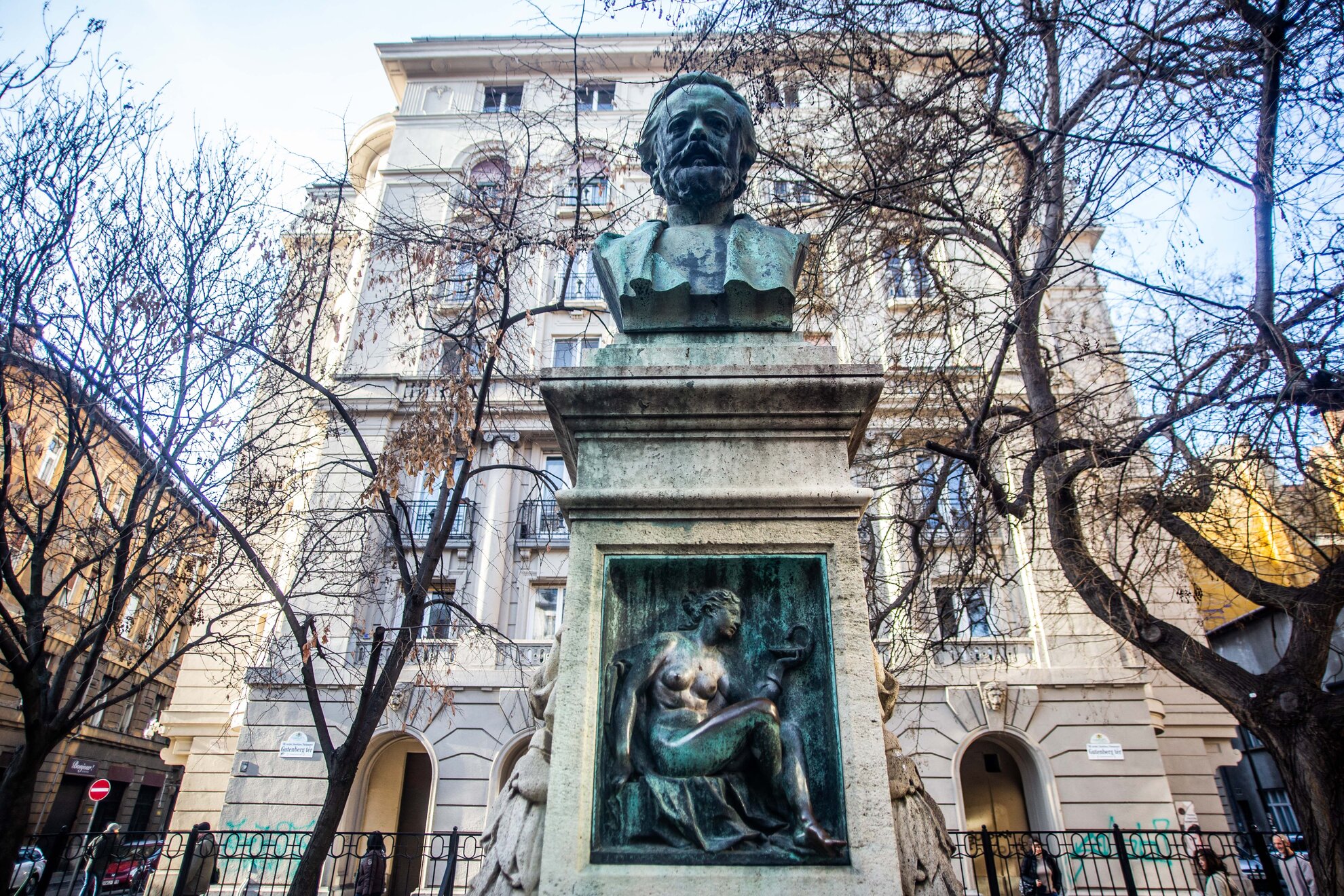
Around 1909, the
Medical Society of Józsefváros was better liked among politicians and the
Budapest Public Works Council than the Joint Association of Budapest Printers
and Letter makers. In addition, an international congress was organised in
Budapest that year by the National Public Health Association.
So, when the doctors’
society turned to the council to erect a statue on the square for which they had already raised money, it was well-received. The bust was created in
1909 by the sculptor György Vastagh and it depicts József Fodor, the chief
physician of the Rókus Hospital between 1868 and 1869.
From 1874 he was the
first Hungarian lecturer in public health at the Faculty of Medicine at the
Medical University of Budapest and the head of the hygiene institute. The
printers were quietened by the fact that a few years earlier, in 1907, the
association's Art Nouveau residential block and cultural centre, the Gutenberg
Home, had been built, which tended to define the life of the square
rather than the bust.
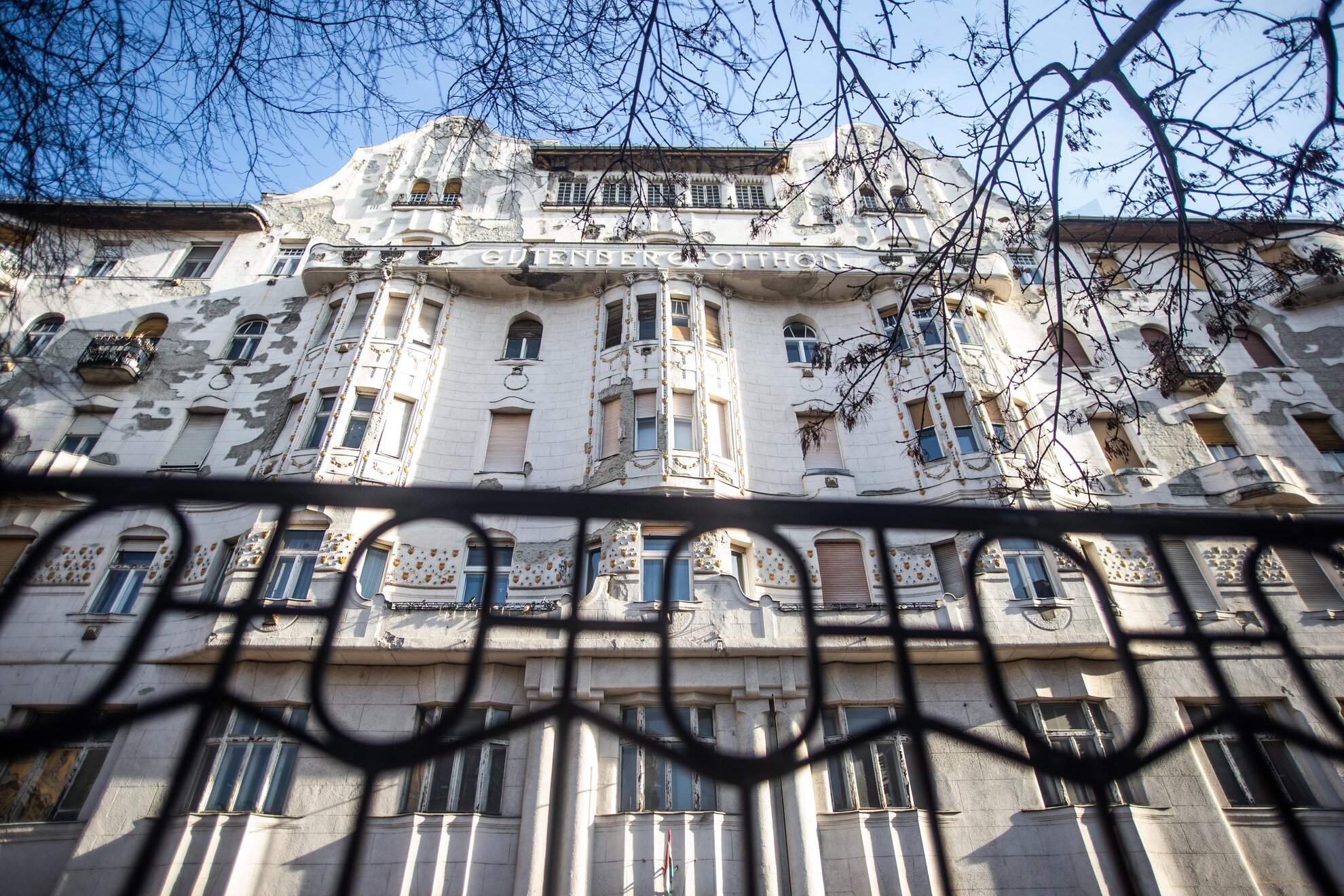
The House of the Rising Sun
The Joint Association of Book Printers and
Letter Makers was founded in 1876 and at that time this profession became so
important that barely ten years later the trade union became a national network.
It was then that the idea arose in the first place to build a headquarters for
the association that would meet the cultural and entertainment needs of
printers. The decision to execute was finally made 20 years later, in 1905.
A
tender was announced for the building and it was won by two brothers, József and László Vágó. The house would have originally been built elsewhere, but the
designers picked another site for the construction: Gutenberg tér,
which was called Sándor tér back then. This the printers readily accepted.
At the same time, they asked three prominent architects – Flóris
Korb, Samu Pecz and Ödön Lechner – to advise them on the construction work. It’s no coincidence that the building became as beautiful as it eventually
turned out.
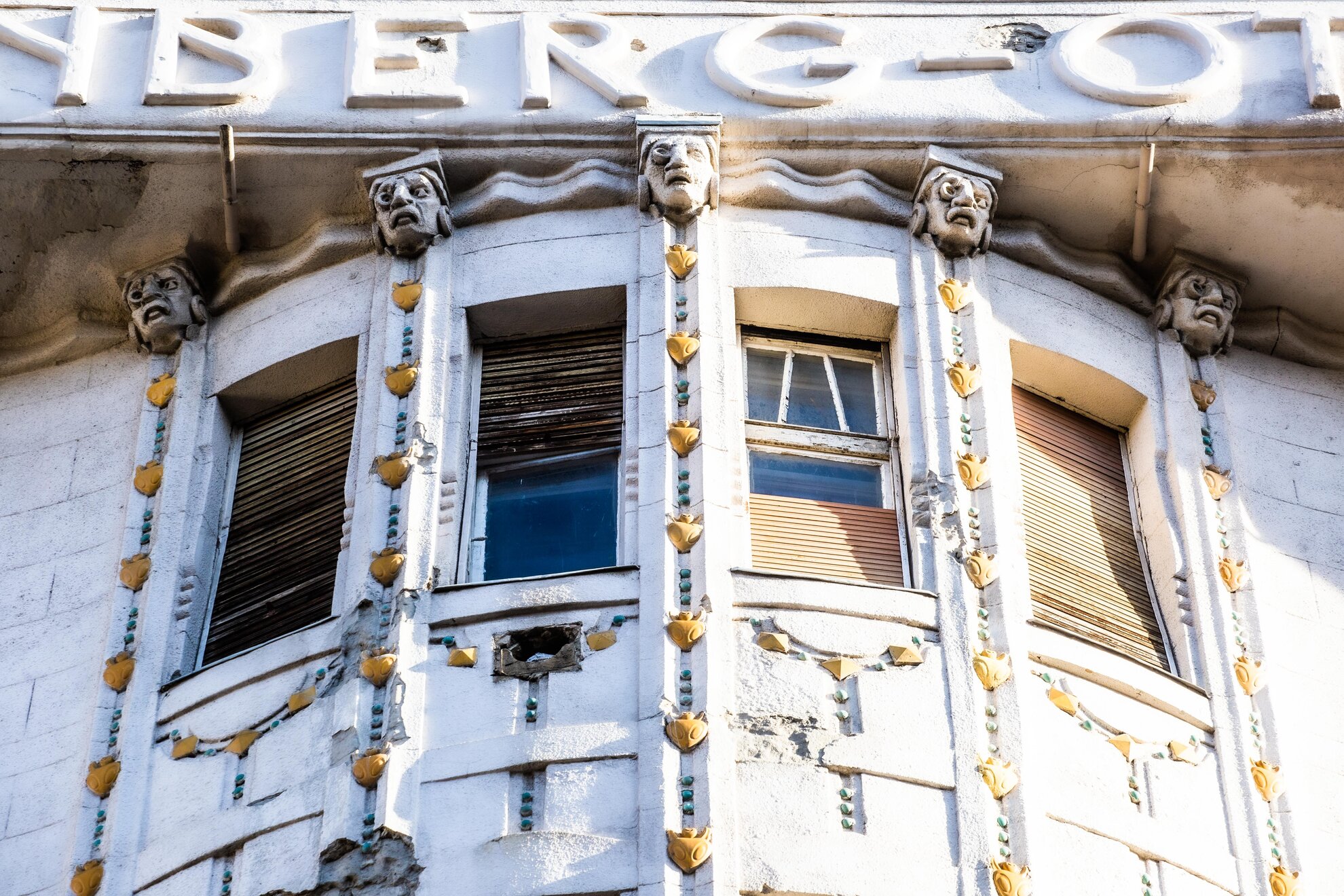
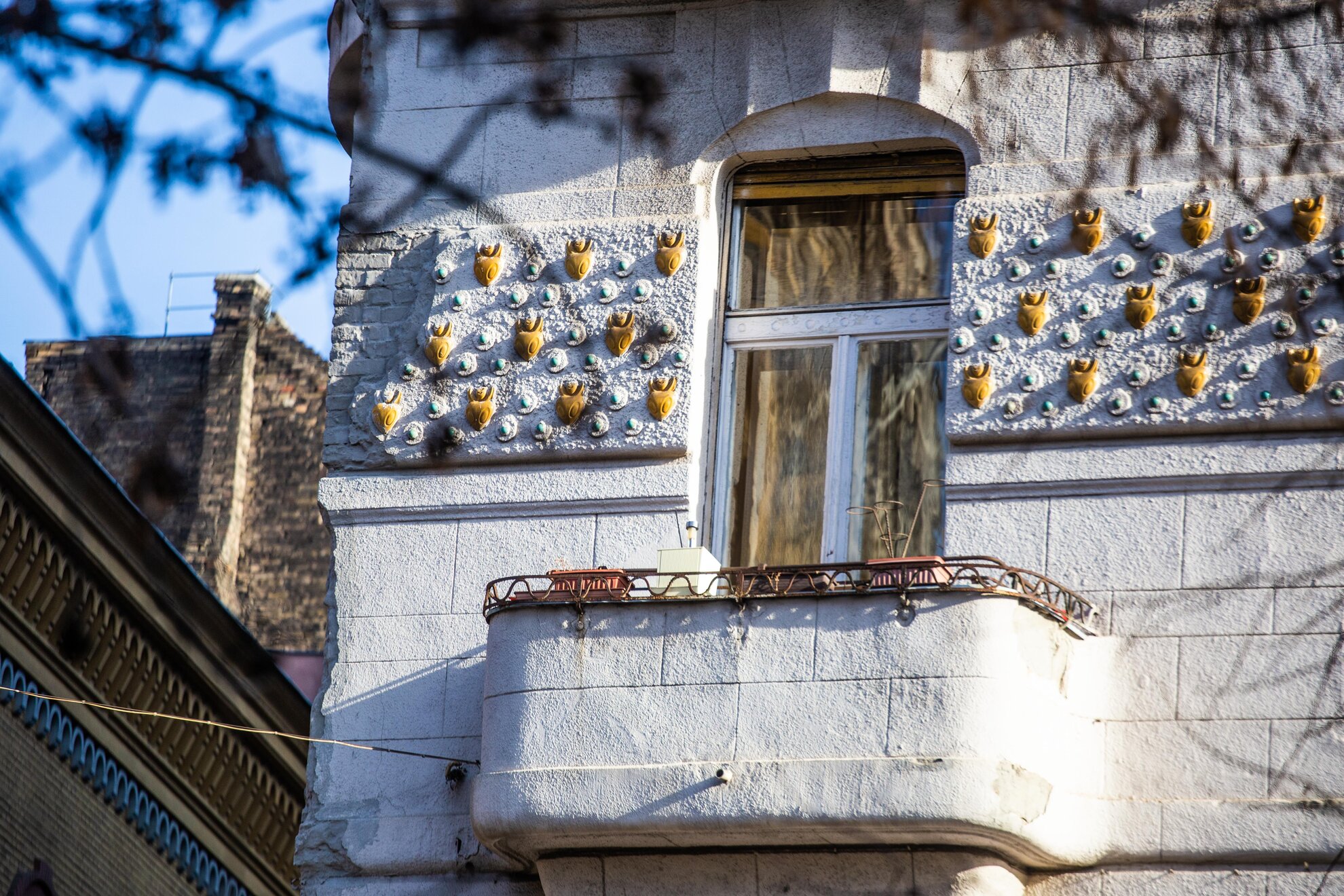
The Gutenberg Home
opened its doors in 1907 and the building served several functions. A total of
38 rental apartments occupied four floors and you could enter the
staircase through a gate overlooking the square, where passenger and
freight elevators were also available to residents.
The association's offices
were on the mezzanine floor and could be accessed through the entrances on side of the house. There was also a lecture hall, a reading room, a playroom, a meeting
room and a library, as well as the editorial offices of Typographia magazine. On the ground floor, there was a café overlooking the square and a
restaurant, as well as a few smaller shops.
In the courtyard stood an ornate
and covered auditorium and theatre. It also hosted a cinema in the 1910s and
1920s called Omnia and then renamed Andersen, accessed through the
café and restaurant. There was an additional studio and dance hall on the top
floor, and a bowling alley on the basement level.
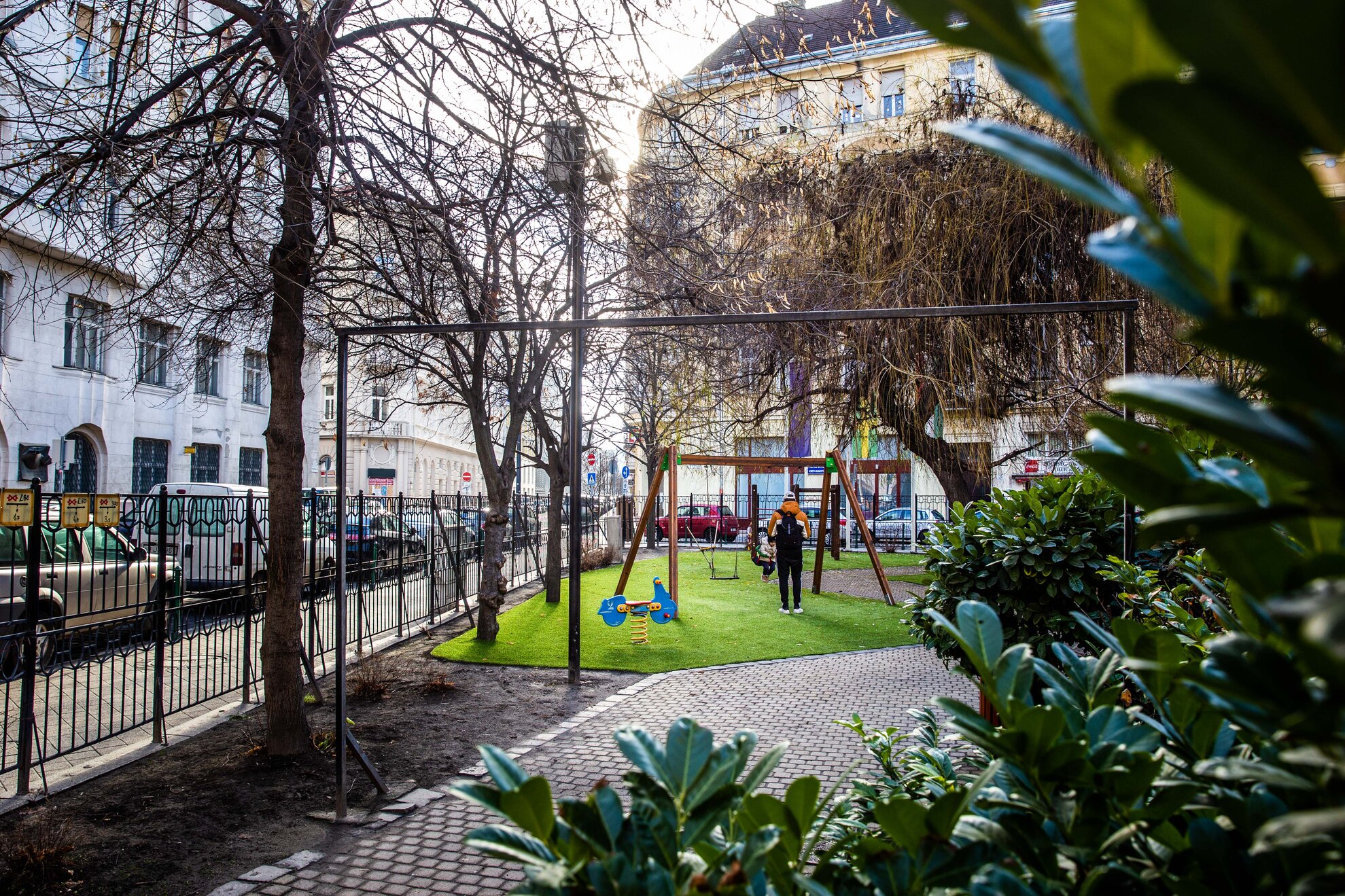
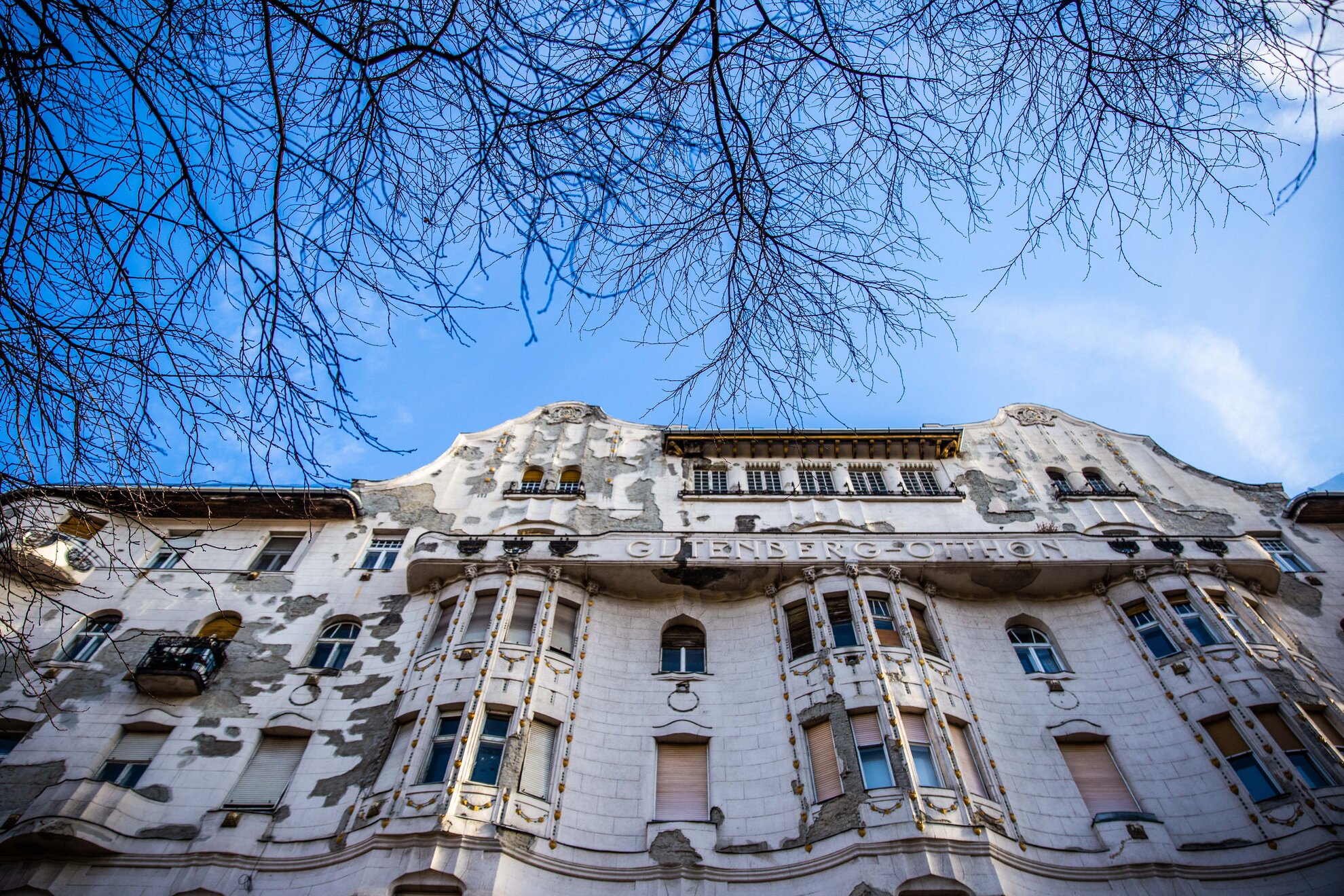
The beautiful Art
Nouveau building was decorated with Hungarian handmade Zsolnay ceramics, murals
by Károly Kernstok and two huge, full-length sculptures depicting printers. The
latter were made by the duo Ödön Szamovolszky and István Gách, with help from Gyula Betlen.
Although the Gutenberg Home withstood world wars, the Siege of
Budapest, nationalisation and the 1956 Uprising, it couldn’t survive the Socialist urban planning of the 1970s. During the barbaric works called
renovation, the building statues were demolished, the Kernstok murals were
plastered, the old, ornate elevators were removed, ordinary lifts were put in
their place, and even the wrought-iron railings were damaged.
The courtyard
theatre is still there, but it has been empty, unused, in a dilapidated state
for decades, even though it was once one of the best of its kind. The good
news is that the house is due for a refurbishment, and they want to restore it
to its original condition, including the building sculptures and Kernstok’s murals.
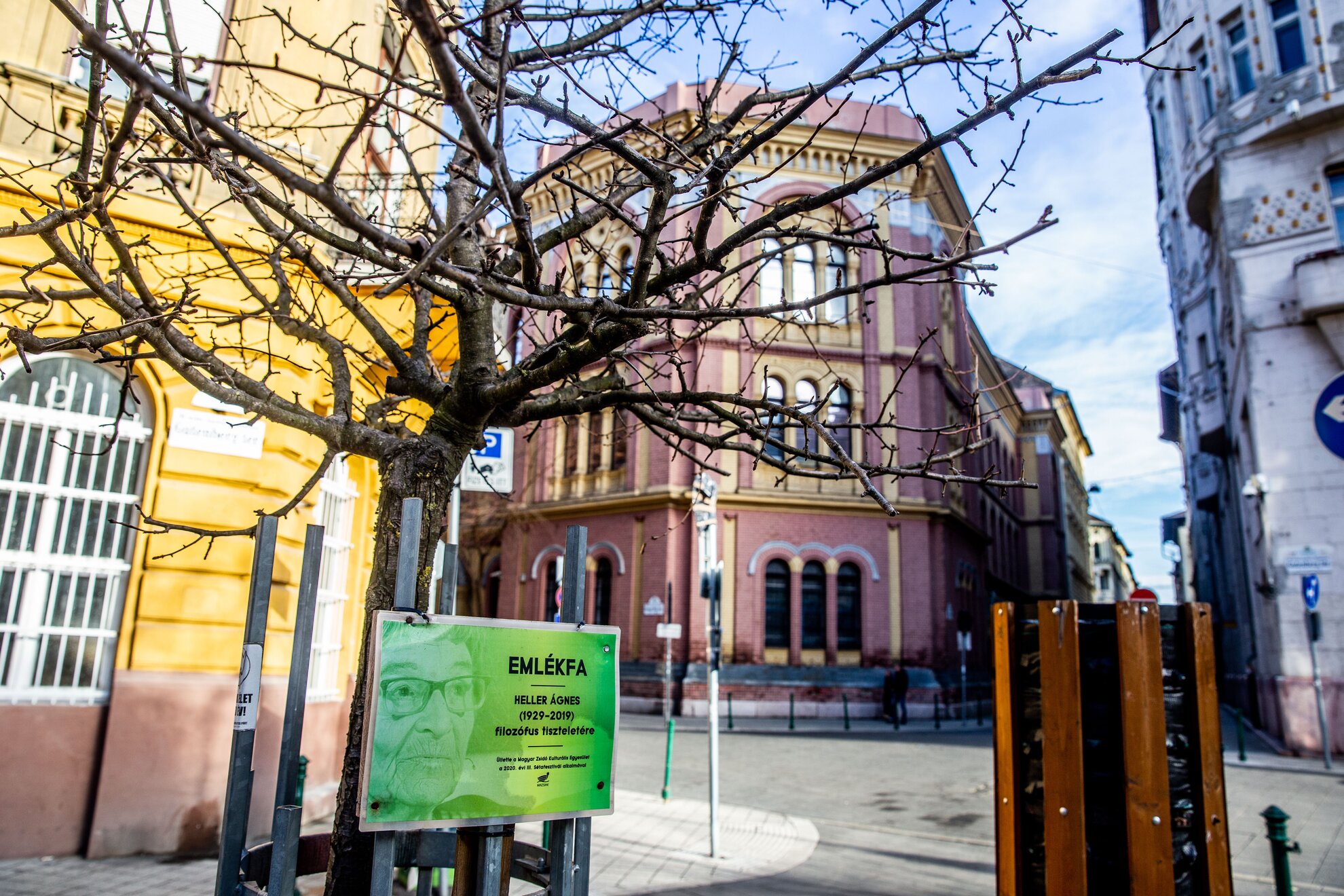
In a natural way
Like so many
squares, Gutenberg has evolved naturally, following the changes in the city. In
the second half of the 1700s, there were still brick burners on the site of
today's Rákóczi tér and the workers' homes were nearby, partly on the site of
Gutenberg tér. The peasants tied to the nearby farms also lived here.
The Téglaégető
út 'Brick burning Road' ran in the line of today's Bródy Sándor utca and obviously led to the brick-burning facility. This was crossed by the Rákos ditch at the height of
Gutenberg tér and it often flooded the area, making life difficult for those
living here. It’s not surprising that today’s Rökk Szilárd utca, located nearby,
was called Sár ‘mud’ utca at that time.
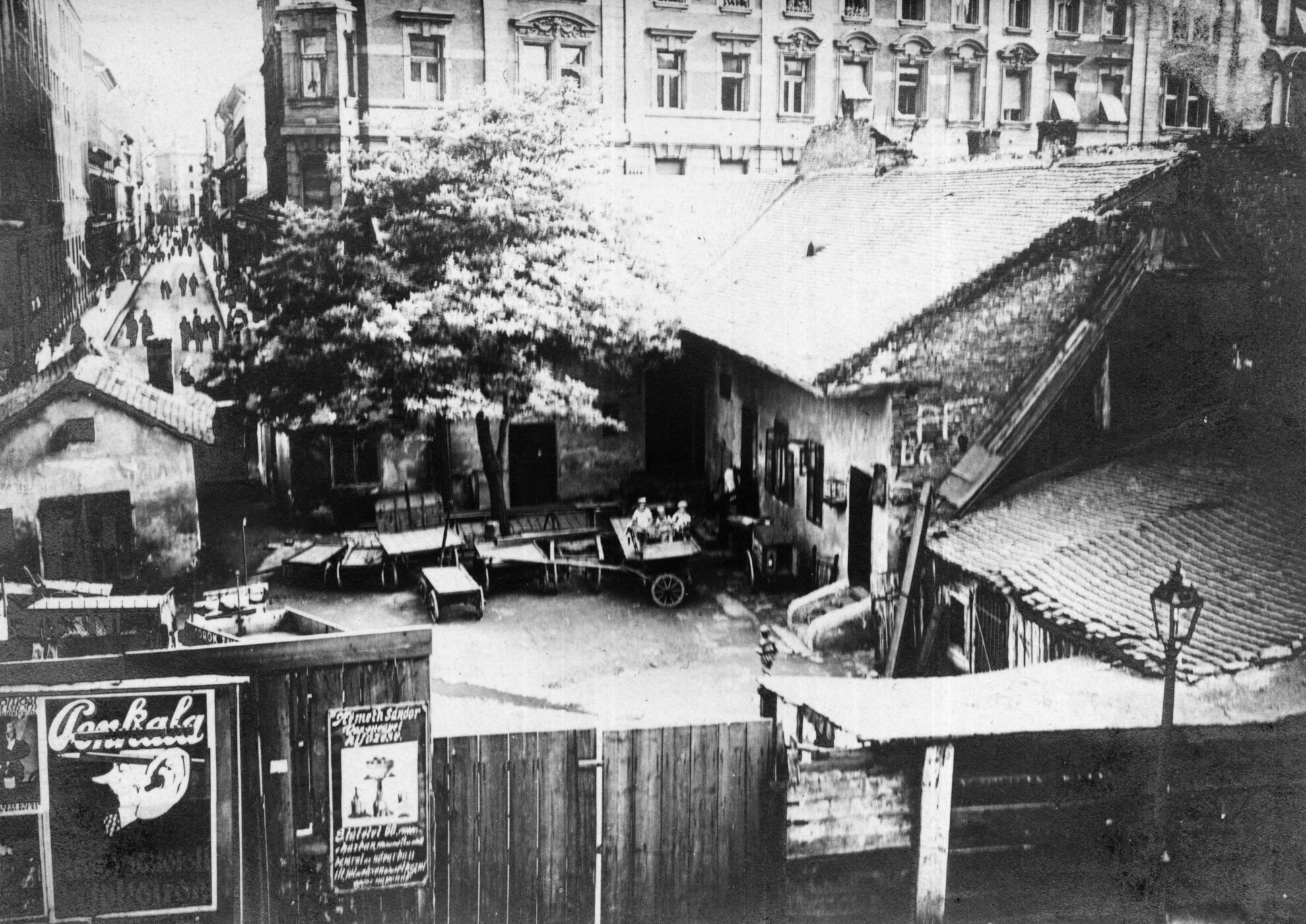
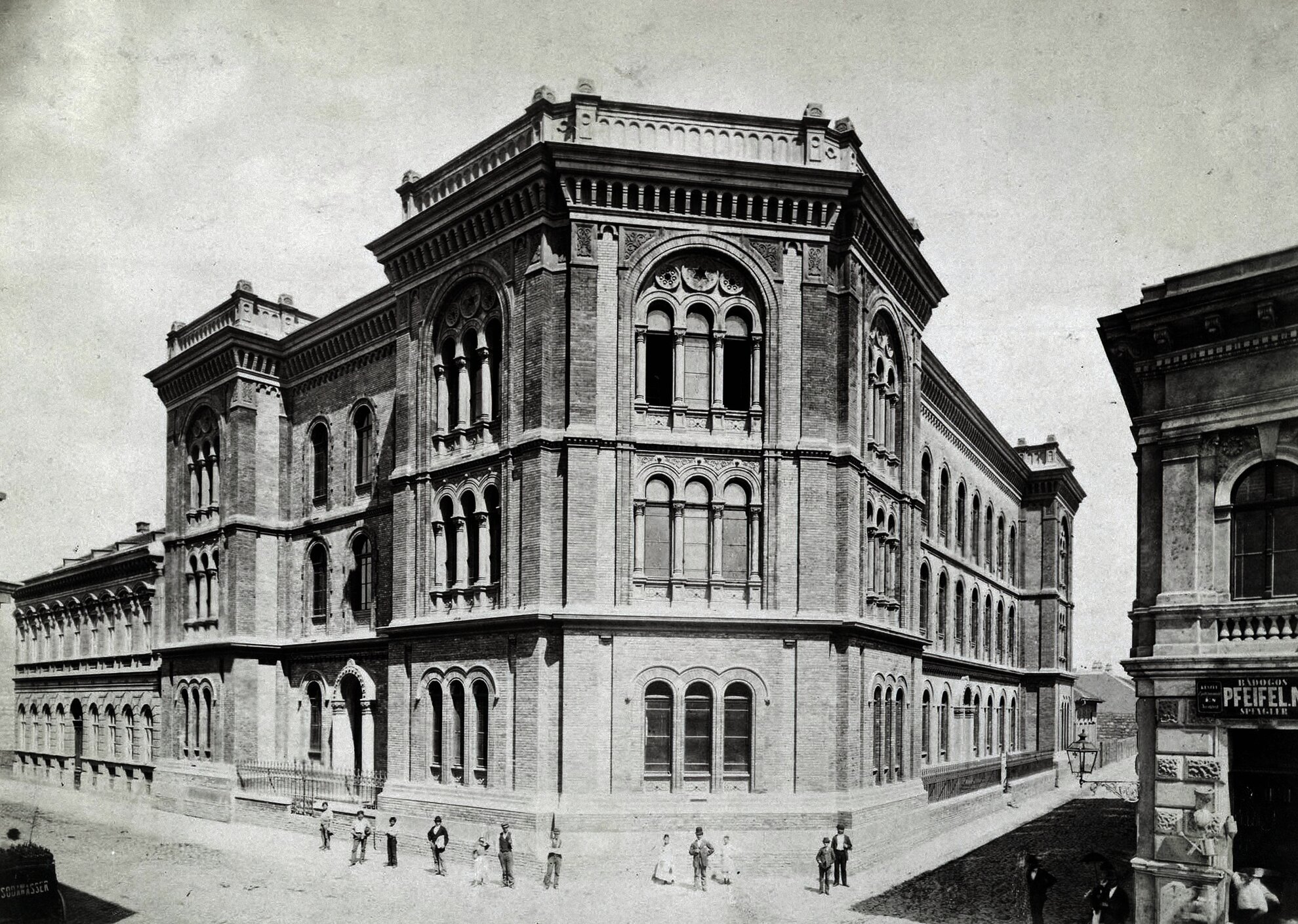
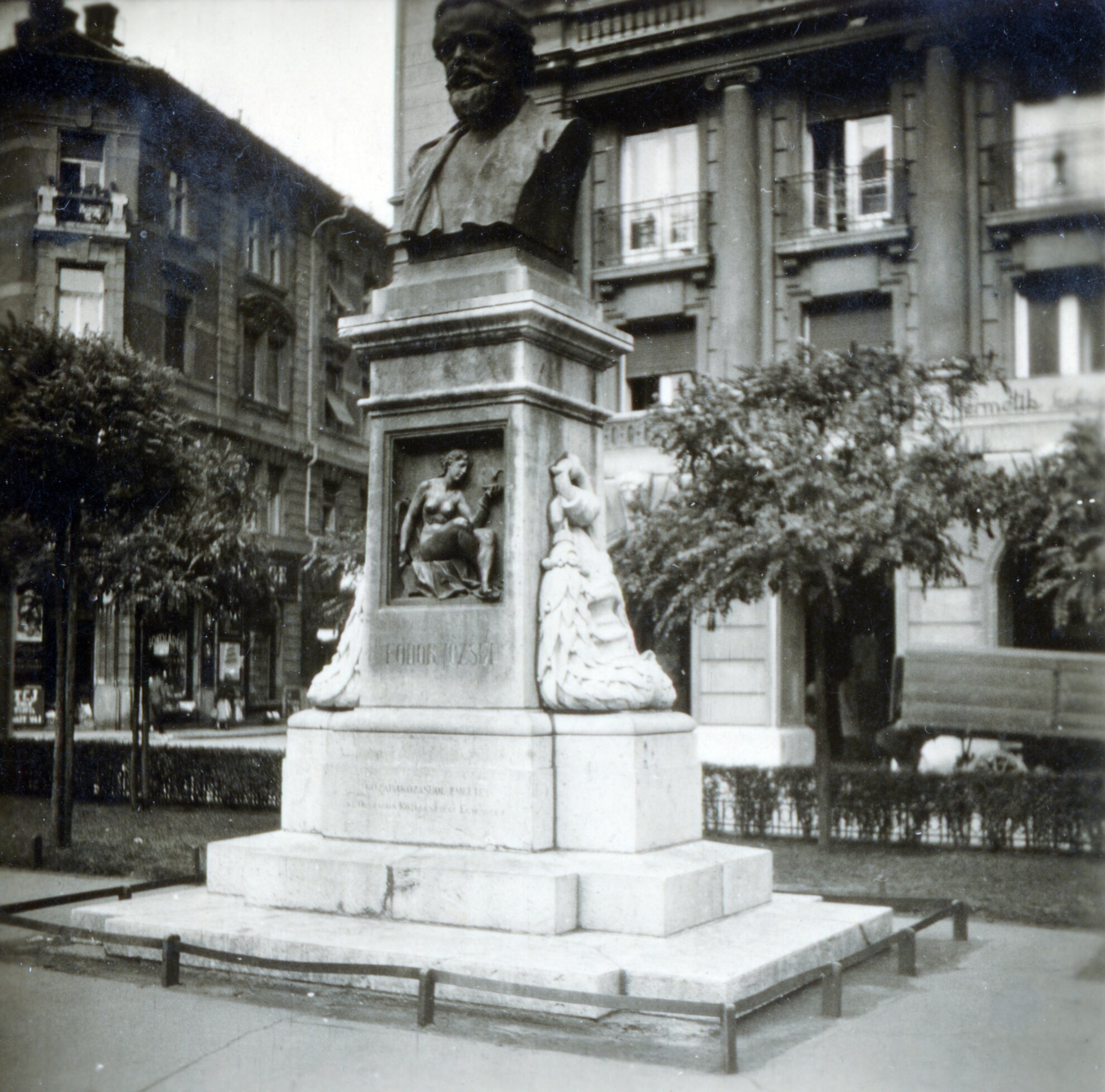
Although, the
expansion of the area was already evident in the 1870s, it was only given a proper name only in 1884, the Budapest Council of Public Works named it Archduke Sándor tér.
At the turn of the century, the never-ending lobby of doctors and printers started
and although the City government did not object any of the renaming
proposals, they finally made a decision.
In 1919 the name of the square changed
to Sándor tér then, ten years later, they returned it to the original one of Archduke Sándor tér then, barely a year later, in 1930, it adopted the more simple Sándor tér. Finally, in 1946, the perseverance of the
printers' lobby paid off and the square was given the name of Gutenberg. This created a
relative win-win situation, although the name of the square was given by the
printers, the statue standing in the middle of the square belongs to the
doctors.
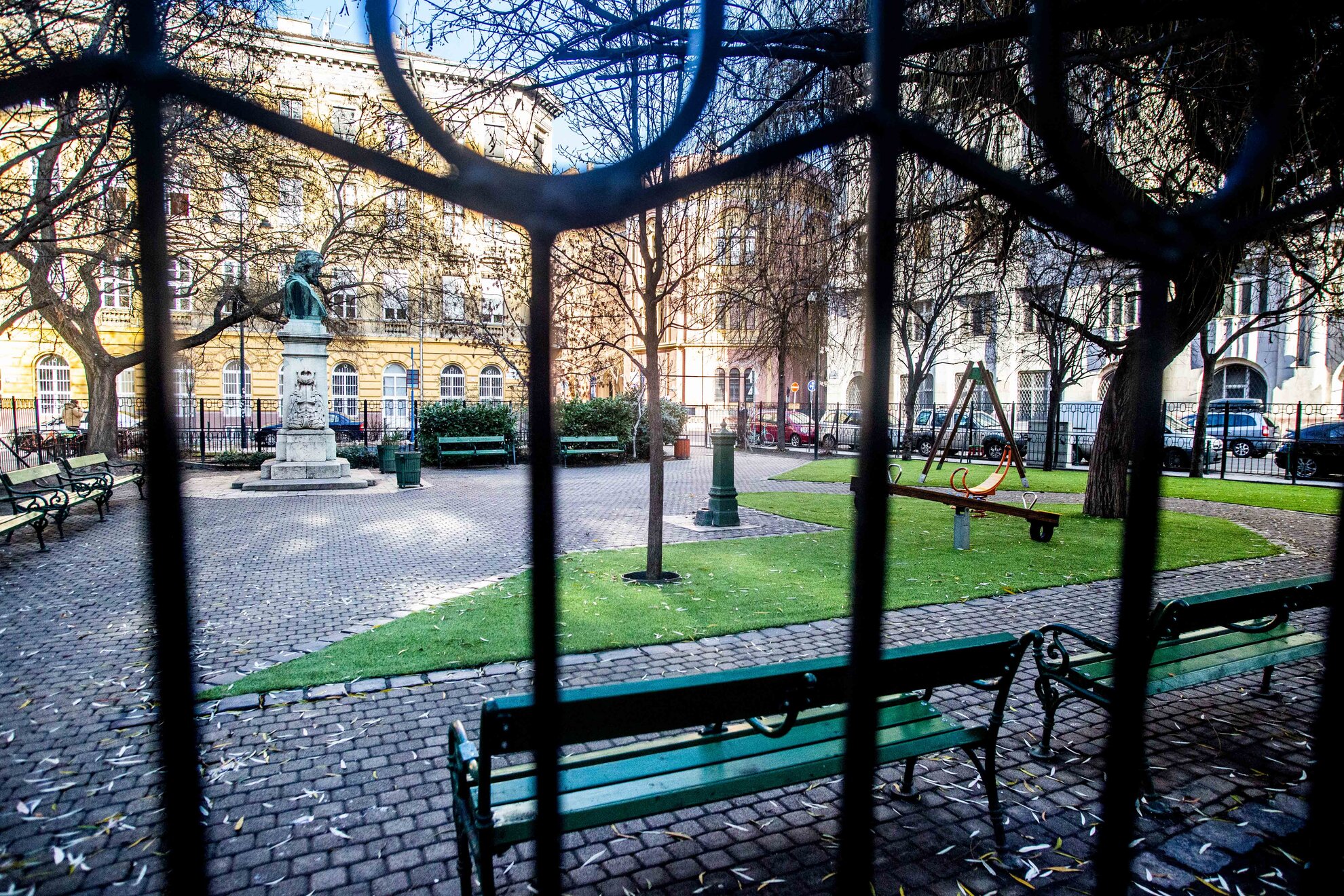
Tiny square, stellar residents
Gutenberg tér hosted many famous figures. Ödön Lechner, designer of Budapest's prestigious buildings, for example, not only helped to build the Gutenberg Home, but also lived in the house himself. So did writer Iván Mándy and philosopher Ágnes Heller.
At the same time, renowned novelist Gyula Krúdy also lived in one of the nearby streets. He often passed the square and weaved it into several of his writings. Another special figure also appears in them, named Jenő Freystädtler, probably the most infamous character ever to step foot on Gutenberg tér...
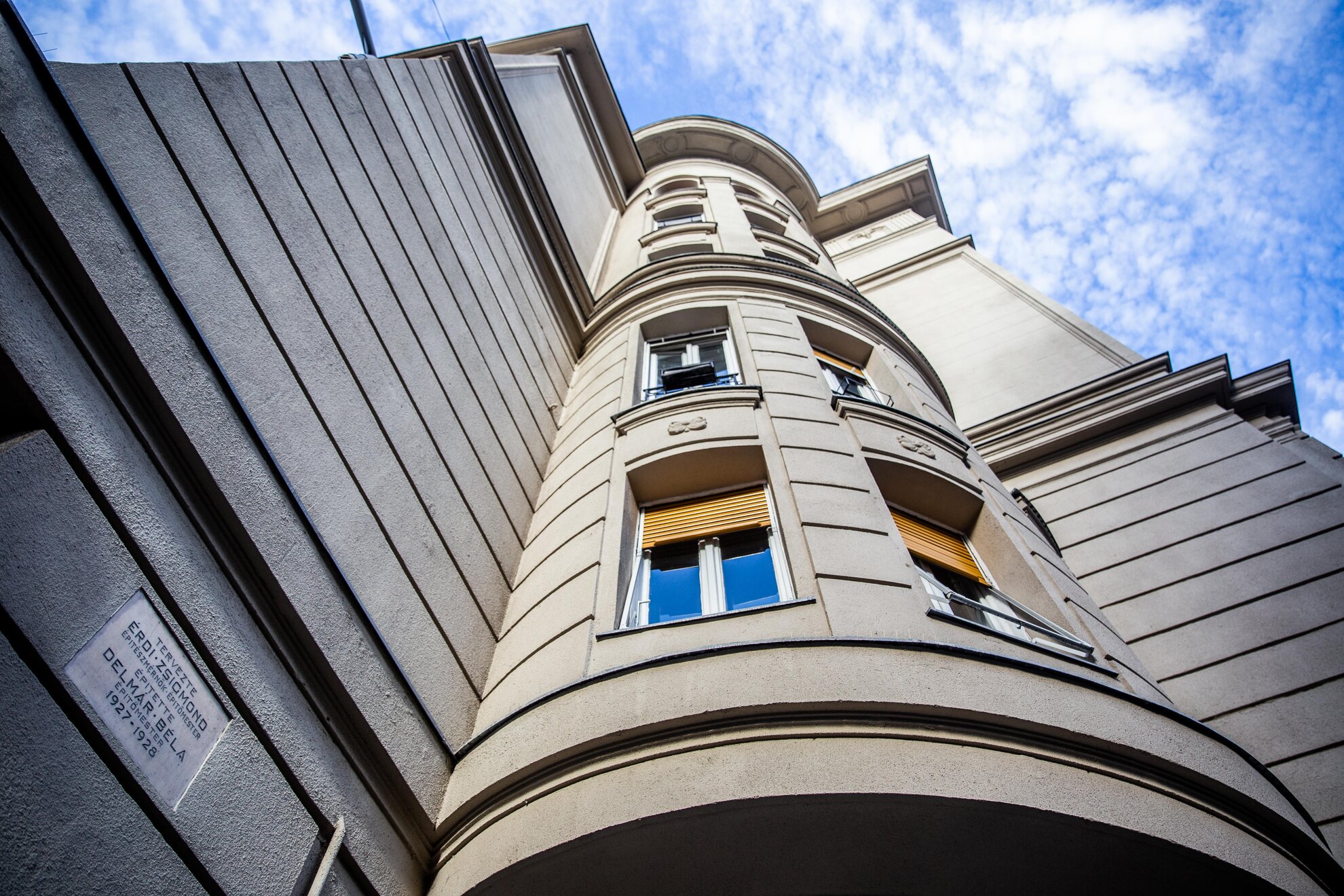

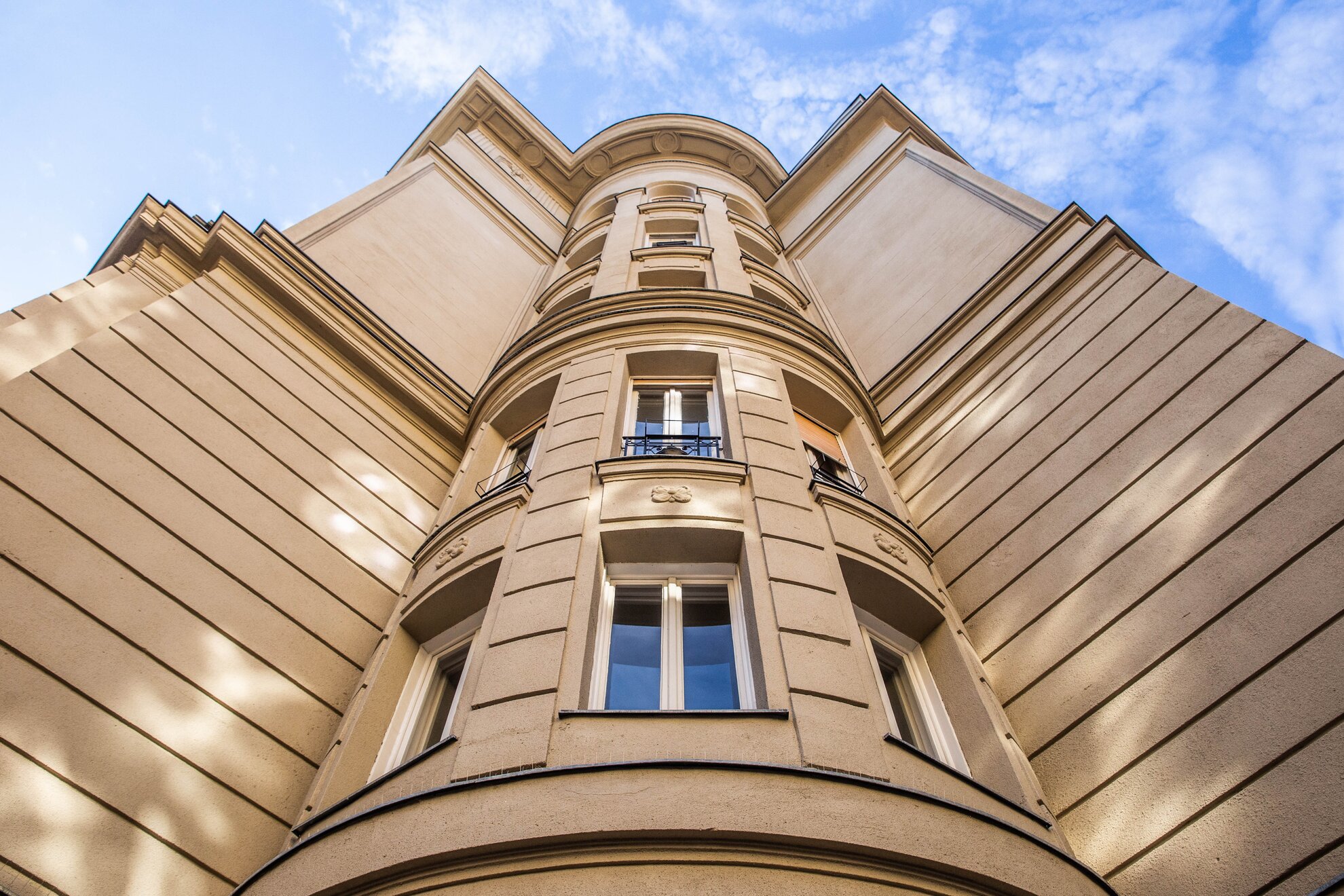
In the decades before World War II, the area served as a home for writers, poets and actors. The latter included Amália Jákó, who lived here thanks to her rich lover. This man was called Jenő Freystädtler the knight-pasha of Kövesgyőr, who led exactly the kind of hedonistic lifestyle his title suggested.
His father was the largest landlord in the Balaton Uplands and owned several agricultural factories. Jenő, the knight-pasha, had never worked a moment in his life, unless wasting his father's property and money was a job.
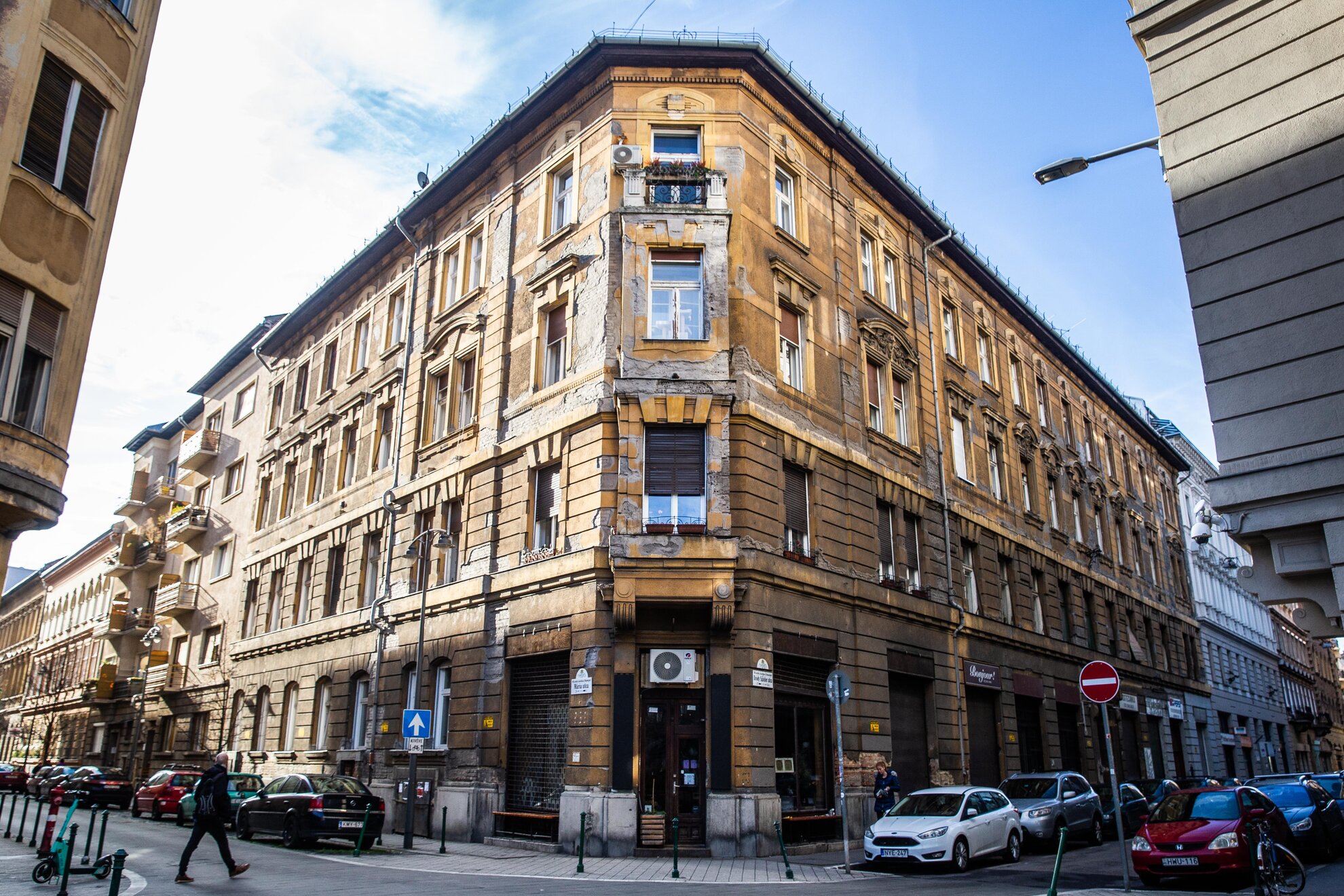
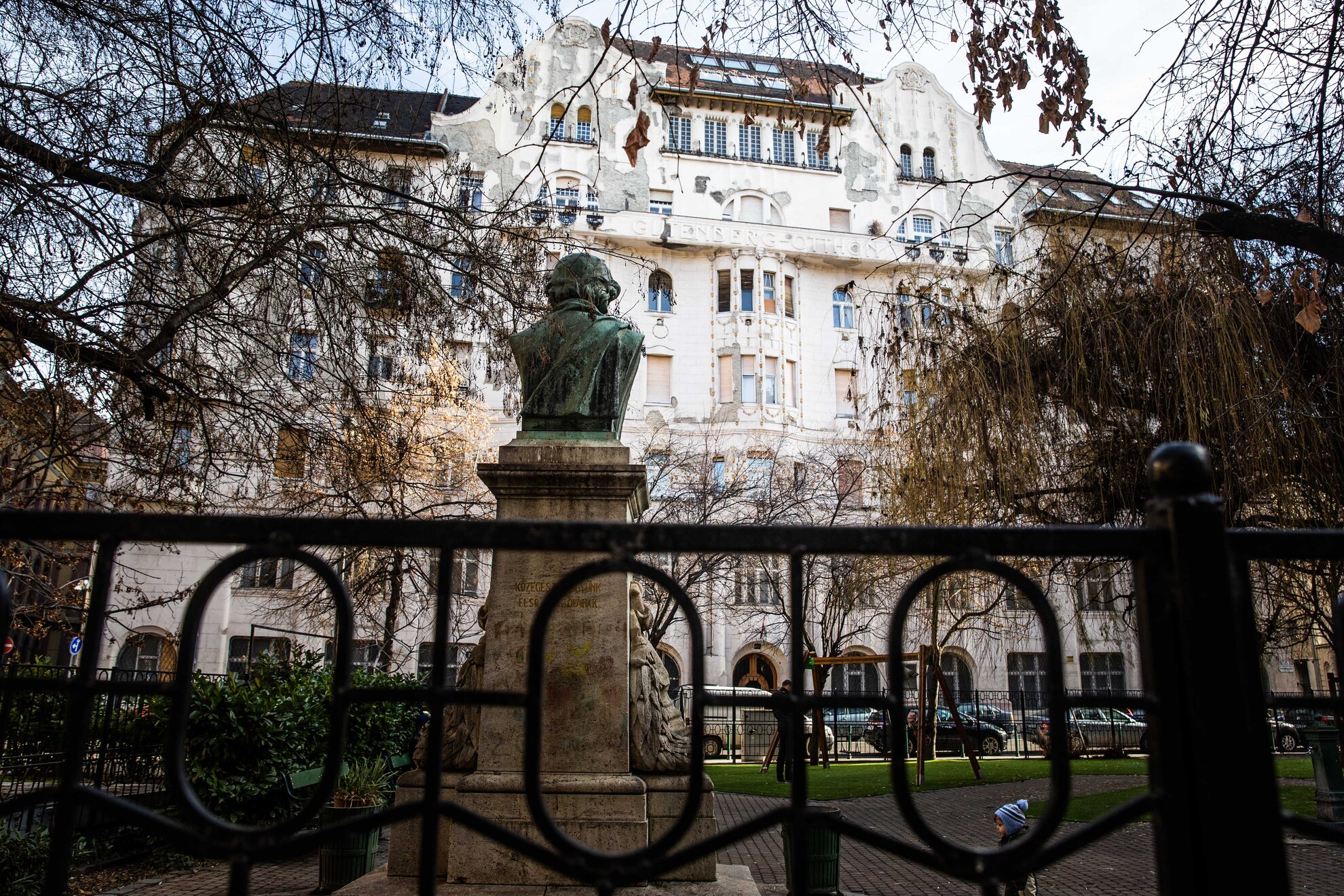
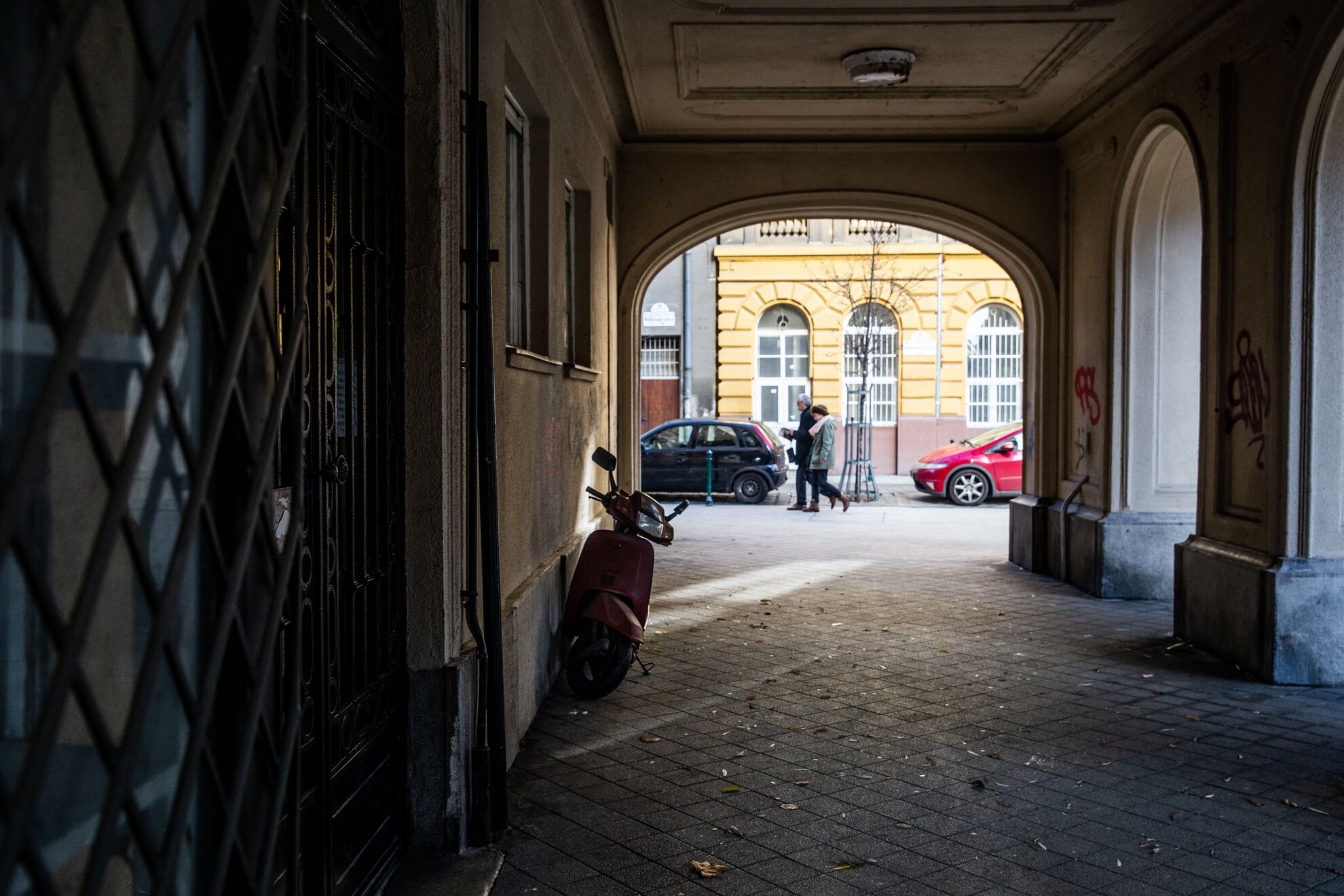
Jenő was one of
the celebrities of the era, a man of countless women and endless champagne. He
had several luxurious palaces in the city and, according to contemporary rumour, in one of them he collected the feet statues of his former lovers: the most beautiful were made of gold, the plainer ones of silver and the
rest, bronze.
He inherited the knighthood, but he earned the title of pasha
himself by participating in the construction of the Turkish railway. As for the actress, Amália Jákó, she was the destruction of the Casanova knight. The
man, completely blinded by his attraction to her, spent all his wealth on her education, paid for her travels and even built a house for the prima donna in his
loving madness.
The punchline goes that he himself was the only one who could never enter the mansion because by the end, he had lost all his money and with it, his power.
